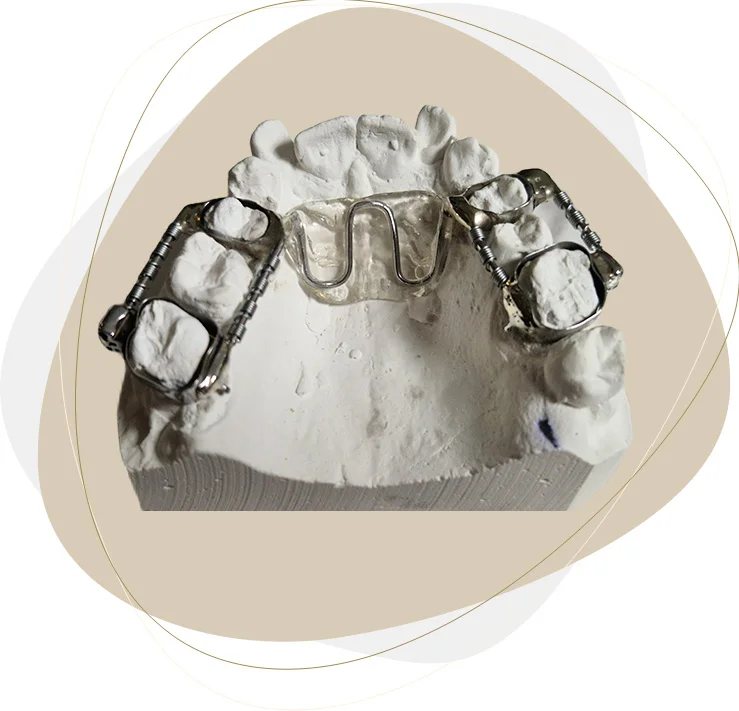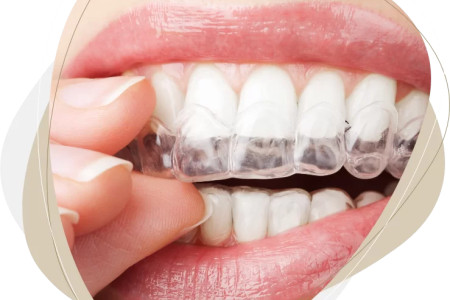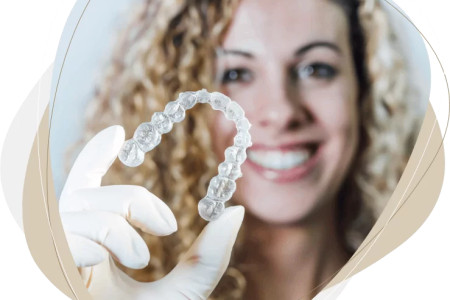Table of Contents
- GMD appliance – without the need to remove teeth.
- Operation of the GMD device
- GMD camera
- GMD distalization apparatus
- Price of the GMD device in a dental office.
- How orthodontic treatment is carried out
- Treatment time
- Tips for dentists and dental technicians.
- What to pay attention to when performing a GMD brace
GMD appliance – without the need to remove teeth.
In 2017, the KarDent studio, represented by Karolina Byczkowska-Wojciechowska, completed certified medical training with Dr. Dominik Piskorski, MD, in the field of "Multidirectional Simultaneous Expansion of Dental Arches. Coordinated Arch Development. Palatal arch - TPB, GMD distalizer, Nance plate. Since then, the studio has been making Greenfield appliances, Lip bumpers, cooperating with doctors focused on orthodontic treatment and CAD technicians.
The GMD appliance, also known as the Greenfield appliance after its creator, is used in the CAD (Coordinated Arch Development®) technique - Multidirectional Simultaneous Expansion of Dental Arches. This group also includes: Nance plate, TPB. This orthodontic treatment technique also uses a Lip bumper device.
Operation of the GMD device
The Greenfield appliance is used with great success to distalize maxillary molars and simultaneously expand the transverse dental arch. The molars are distalized using telescopes and 4 springs attached to four rings, which exert the same uniform forces and move along the track without rotation of the molars. The Greenfield distalizer moves the teeth by up to 7 mm and is cemented for a period of about 12 months. The GMD appliance also has an acrylic button - Nance's button may slightly protrude from the palate after the appliance is put on, but after a few days it should "soften" and begin to adhere.
GMD camera
What is tooth distalization?
A term often used by specialists, but not always understandable to the patient. This is a treatment that involves moving the teeth "backwards" - i.e. the sixths towards the sevenths, the sevenths towards the eighths, etc. There are various types of appliances available on the market for moving teeth distally, and one of them is the GMD appliance.
When do we need to use distalization of molars?
Teeth distalization is used primarily when the patient's teeth, especially in the anterior section, do not fit into the arch and we want to avoid the need for extraction (removal) - we are talking about premolars.
GMD distalization apparatus
Advantages of the GMD camera:
- the distalizing force is controlled, the teeth are distalized axially
- ensures rotation control of distal molars
- at the same time, it ensures the transverse expansion of the maxillary dental arches
- vertical control, distalization does not have to open the bite
- allows the second premolars to drift freely
- easy activation of the device (clamp stoppers)
- effective continuous, even molar distalizing force
- very little inclination of the incisors
- distalization 1 mm per month
- no need to remove premolars
Price of the GMD device in a dental office.
Prices in offices will vary greatly. This is mainly due to the region of the country. The estimated price of the device itself in a dental office is PLN 1,800 to even PLN 3,000. Please remember that in this method of orthodontic treatment, a GMD appliance is most often placed on the top, and a Lip bumper is also used for the lower dental arch.
A frequently asked question by patients is whether the GMD device is reimbursed by the National Health Fund? Unfortunately, the range of appliances that are reimbursed by the National Health Fund is very small, they are most often removable single- or bimaxillary appliances, the appliance described in this article is not reimbursed.
You are a doctor and you want to see the full offer of the laboratory. Please contact me
How orthodontic treatment is carried out
During the first visit, the doctor conducts an interview, learns about the patient's defect, and most often takes an impression of the maxilla and mandible to create diagnostic models in order to carry out an orthodontic analysis in order to select the appropriate appliance.
The next visit is a consultation during which the treatment plan is discussed. If the patient accepts the conditions and the GMD device is proposed, separation rubber bands are placed. They are necessary to make space for the rings that will be cemented later.
The patient wears separation rubber bands for about 7 days. After this time, he returns to the office where the rings for molars and premolars are adjusted. During the same visit, an impression is made - which, together with the rings, will be sent to the workshop that will make the GMD device ordered and designed by the doctor.
The next visit to the dentist's office is to try on and put on the GMD brace. It is cemented permanently, so the patient will not be able to remove it on his own during the treatment.
Follow-up visits with braces usually take place every 6-8 weeks, but this depends on the treatment plan.
After obtaining the necessary space, the GMD device is replaced with a stabilizing device called a Nance plate and treatment begins with a fixed device.
Treatment time
Treatment continues until the molars reach Angle's class 3. After completing the treatment, the Nance Plate is used and preparation is made placement of fixed braces.
Depending on the amount of space needed, treatment may last from 8 to 14 months. Of course, the individual biological susceptibility of a given patient should also be taken into account - hence the treatment time is always considered an estimate.
Tips for dentists and dental technicians.
If you are a dentist and are looking for your path, I suggest you consider orthodontic treatment devoted to the CAD technique.
The CAD technique was developed by Dr. Raphael L. Greenfield, D.Ds, M.Sc.D. from the USA. Using his many years of experience as an orthodontist and tens of thousands of cured patients, he created a method in which, using low biological forces, without the need to remove teeth, he achieved excellent aesthetic results with great success.
Multidirectional Simultaneous Dental Arch Expansion reverses the order of treatment phases. The treatment phase with fixed braces is moved to the end of the treatment. Then the arches are already extended with GMD and Lip Bumper appliances. In this way, the space for the incisors is recreated. The treatment focuses on the forces behind the side teeth. The main movements occur in the molars and premolars.
The result is a beautiful, wide and stable dental arch, without the need to remove teeth.
The question arises whether another camera can give the same results? The GMD appliance is best suited for this orthodontic treatment and is a precursor.
What to pay attention to when performing a GMD brace
Choose certified laboratories to make your GMG apparatus. In the GMD apparatus made on four rings, errors are very common. This may directly affect the proper course of orthodontic treatment
The first basic thing is to keep the pistons parallel and away from the second premolars. If this relationship is not maintained, the GMD devices should be returned for repair. The parallelism of the pistons should be maintained in the sagittal and horizontal planes.
The next element is properly adjusted springs. They cannot be too large from the beginning. They must lie passively in space on the pistons.
The wire element embedded in the acrylic button should be M-shaped and positioned towards the palate.




